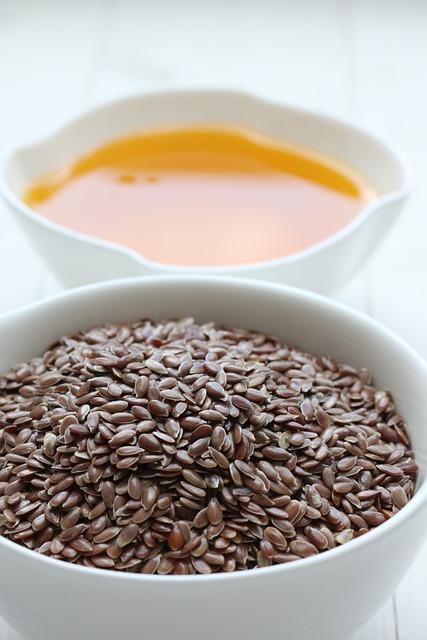In the ever-evolving world of fitness and wellness, where new trends emerge as quickly as the sweat on a runner’s brow, the quest for optimal recovery strategies is relentless. Amidst the cacophony of supplements and nutritional advice, one unsung hero consistently rises to the surface—omega-3 fatty acids. These essential nutrients, predominantly found in fish oils and flaxseeds, have long been celebrated for their heart-health benefits. Yet, recent studies suggest that their influence extends far beyond cardiovascular wellness, potentially playing a pivotal role in alleviating workout-related inflammation. As athletes and fitness enthusiasts alike seek to enhance performance and reduce recovery time, the spotlight now shifts to understanding how omega-3s may hold the key to soothing the body’s post-exercise aches and pains. This article delves into the science behind omega-3s and their impact on inflammation, unraveling the mysteries of how these fatty acids could transform the way we approach fitness recovery.
Unlocking the Power of Omega-3s in Post-Workout Recovery
Omega-3 fatty acids, particularly EPA and DHA found in fish oils, are emerging as potent allies in the battle against workout-induced inflammation. This inflammation, a natural response to muscle strain and microtears, can lead to soreness and prolonged recovery times. By incorporating omega-3s into your diet, you may experience a reduction in the production of inflammatory compounds, allowing your muscles to heal more swiftly and efficiently.
- Improved Muscle Recovery: Omega-3s help in reducing muscle soreness and fatigue, allowing for quicker recovery between workouts.
- Joint Health Support: These fatty acids also contribute to maintaining joint flexibility and reducing stiffness, crucial for sustaining an active lifestyle.
- Enhanced Protein Synthesis: Omega-3s can boost the body’s ability to synthesize proteins, crucial for muscle repair and growth.
Integrating omega-3-rich foods like salmon, mackerel, and walnuts, or opting for high-quality supplements, could be the key to unlocking a more efficient recovery phase, helping athletes and fitness enthusiasts alike to stay at the top of their game.

How Omega-3 Fatty Acids Target Inflammation at the Cellular Level
Omega-3 fatty acids, predominantly found in fish oil, play a pivotal role in combating inflammation at the cellular level. These essential nutrients are incorporated into cell membranes, altering the lipid composition and fluidity, which in turn influences the behavior of inflammatory cells. By modulating the production of eicosanoids—hormone-like substances that orchestrate inflammatory responses—omega-3s effectively reduce the synthesis of pro-inflammatory cytokines and promote the generation of anti-inflammatory mediators. This biochemical balancing act helps in alleviating the muscle soreness and joint pain often associated with intense workouts.
- Cell Membrane Integration: Omega-3s enhance membrane fluidity, allowing for better cellular communication and reduced inflammation.
- Eicosanoid Production: They shift the balance from pro-inflammatory to anti-inflammatory eicosanoids, aiding in quicker recovery.
- Cytokine Modulation: By downregulating inflammatory cytokines, omega-3s minimize tissue damage and pain post-exercise.
These actions not only support recovery but also contribute to long-term joint health, making omega-3s a valuable addition to the diet of athletes and fitness enthusiasts alike.

Incorporating Omega-3s into Your Fitness Regimen for Optimal Benefits
Omega-3 fatty acids are renowned for their powerful anti-inflammatory properties, making them an excellent addition to any fitness routine. These essential fats can help mitigate the inflammation that often follows intense physical activity, promoting quicker recovery and enhancing overall performance. To harness these benefits, consider incorporating foods rich in omega-3s such as salmon, flaxseeds, and walnuts into your diet. Not only do they provide a natural way to combat inflammation, but they also support cardiovascular health, which is crucial for sustained physical exertion.
- Salmon: A rich source of omega-3s, providing both EPA and DHA.
- Flaxseeds: Packed with alpha-linolenic acid (ALA), a plant-based omega-3.
- Walnuts: A convenient snack option that offers a healthy dose of omega-3s.
Integrating these nutrient-dense foods into your meal plan not only aids in reducing inflammation but also contributes to joint health, which is pivotal for maintaining an active lifestyle. Moreover, for those seeking convenience, omega-3 supplements can be an effective alternative, ensuring you receive an adequate amount of these essential fats daily.

Expert Tips for Maximizing Omega-3 Intake and Reducing Inflammation
Enhancing your omega-3 intake can be a game-changer in your fitness journey, especially when it comes to tackling workout-induced inflammation. Here are some expert-backed strategies to integrate these powerful fatty acids effectively into your diet. Start by incorporating fatty fish like salmon, mackerel, and sardines into your meals at least twice a week. If you’re not a fan of fish, consider adding plant-based sources such as chia seeds, flaxseeds, and walnuts, which provide alpha-linolenic acid (ALA), a precursor to the more potent forms of omega-3s.
- Opt for omega-3 enriched eggs for an easy breakfast boost.
- Use flaxseed oil or walnut oil in salad dressings or smoothies.
- Consider supplements, but consult with a healthcare provider to find a reputable brand and appropriate dosage.
Incorporating these tips not only aids in reducing inflammation but also supports overall heart health and cognitive function. Remember, the key to maximizing benefits is consistency and variety in your dietary choices.
